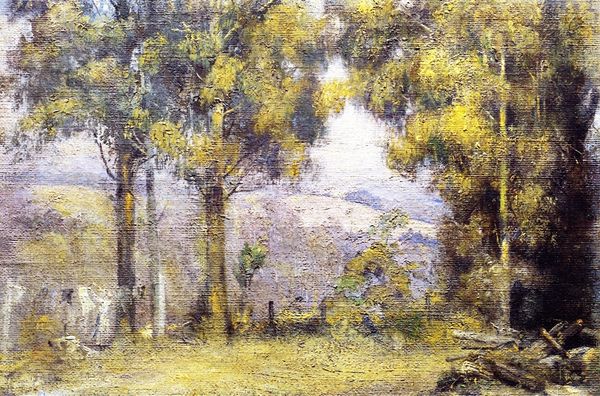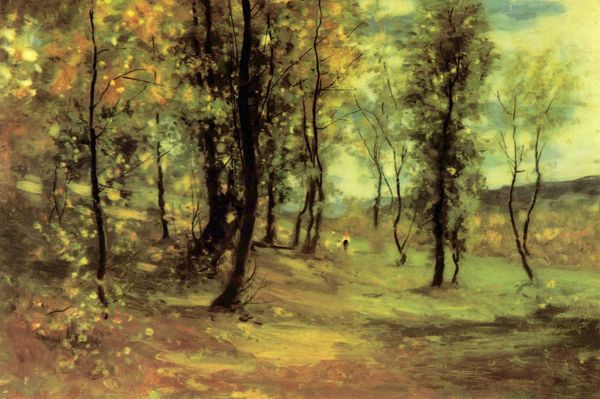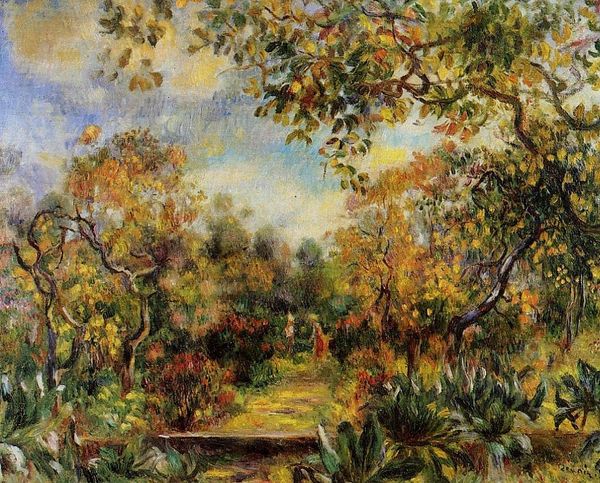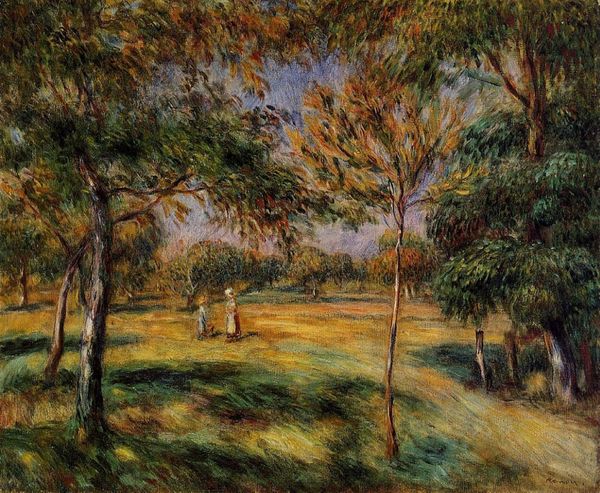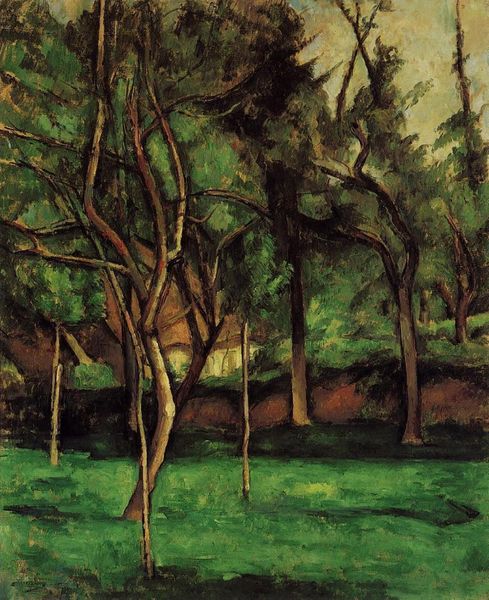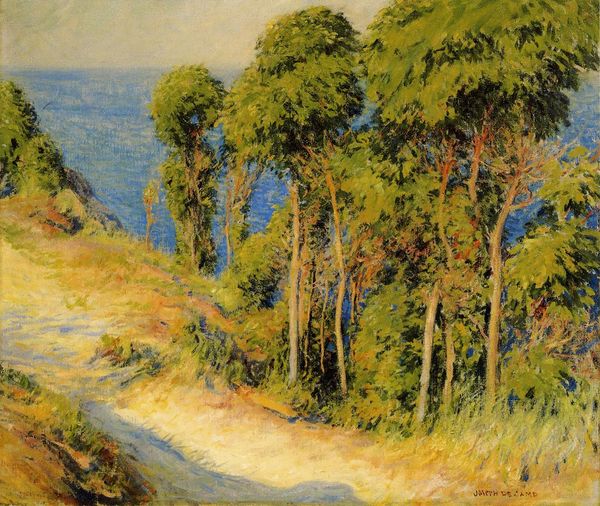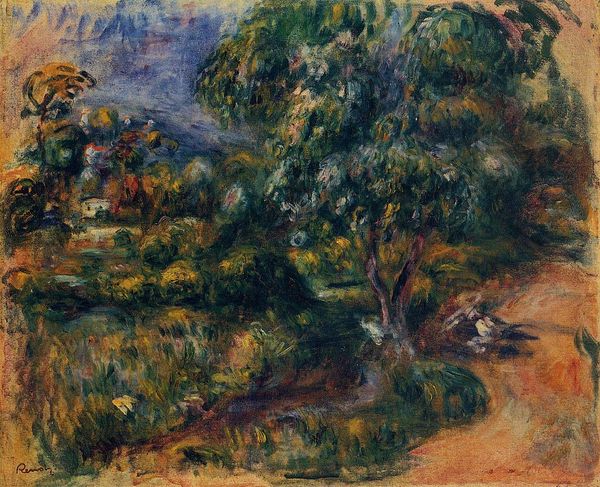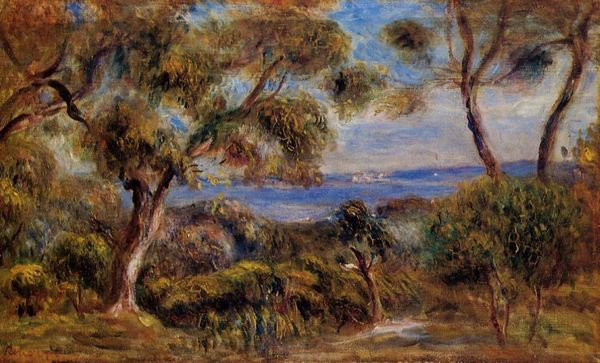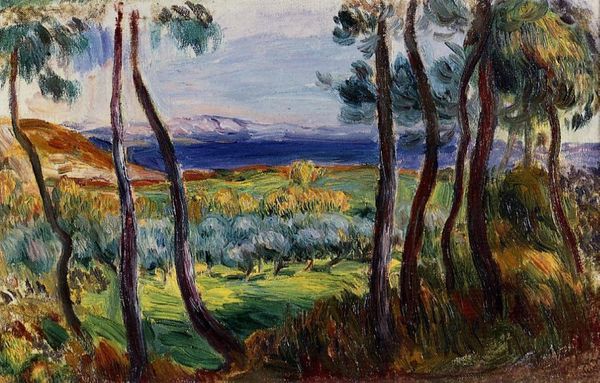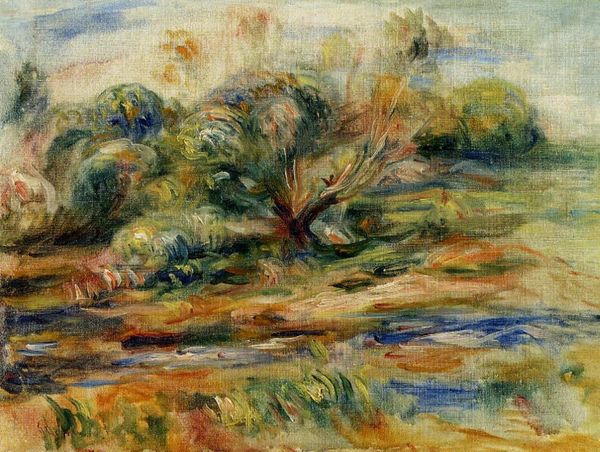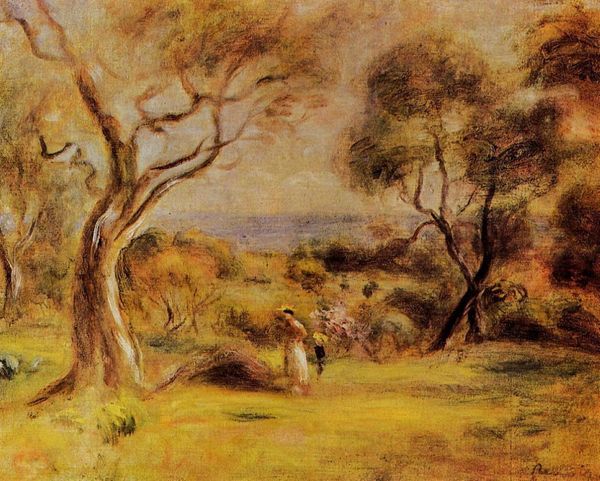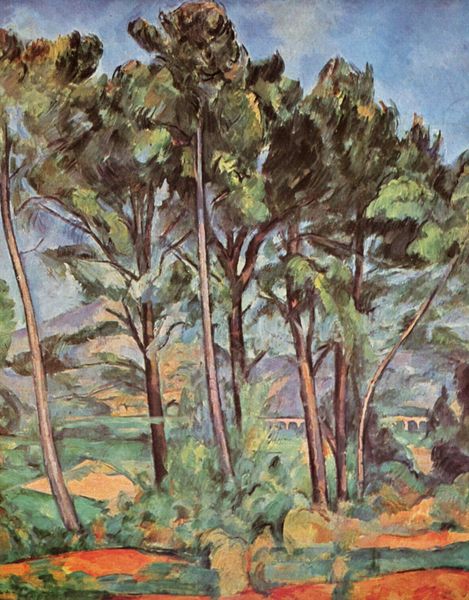
Copyright: Public domain
Curator: Here we have Pierre-Auguste Renoir's "Cape Saint Jean," painted in 1910. It's an oil on canvas, a late-period landscape painted in his signature Impressionist style. Editor: My first thought is, surprisingly, coziness. The colours are warm, like honey, even though it’s a seascape. Curator: The colours absolutely dominate! Renoir's brushstrokes are almost feverish here. The scene pulses with life, vibrating with this warmth and energy. It almost obscures, but the trees feel symbolic like gatekeepers guarding a tranquil scene. The scene recalls a sort of earthly paradise. Editor: And those feathery brushstrokes suggest an immediacy; you can practically feel Renoir capturing a fleeting moment en plein air. Look closely, you see the canvas peeking through in places, a raw quality which betrays, perhaps intentionally, the labour in producing such "spontaneity". I’m fascinated by what materials were available to Renoir in this period— what dictated his colour palette? How did commercial availability impact even "genius" choices in art making? Curator: Interesting perspective! Yes, despite his classical training, he wholeheartedly embraced Impressionism, rejecting academic finish in favour of capturing light and atmosphere with unprecedented directness. Look at how light dances on the water! For Renoir, light itself was imbued with deeper meanings about sensation and experience, wasn’t it? It wasn’t just a scientific observation of the visual, but an emotional interpretation of nature's effects on the spirit. Editor: Precisely, and the social context of this style! Think about leisure culture in the early 20th century—how did paintings like these become objects of bourgeois consumption and influence the social ideas and desires of the period? It represents a fascinating intersection of materiality, labour, and social messaging. Curator: True, but in looking at the formal aspect, it suggests the landscape almost overwhelms us with its beauty, blurring the line between representation and pure sensation. Editor: Ultimately, analyzing this Renoir through a lens of material production and consumption offers valuable insights into understanding both its aesthetic qualities and its historical positioning, not just the light it captures, but its value within the social currents of the period. Curator: I suppose in that sense, then, we can look beyond the visual delights and toward the layers of historical experience and the ideas the artist attempted to conjure, and not just paint. Editor: Exactly! Now I might actually consider this "honeyed coziness" more carefully, seeing the layers beneath a purely impressionistic surface.
Comments
No comments
Be the first to comment and join the conversation on the ultimate creative platform.


